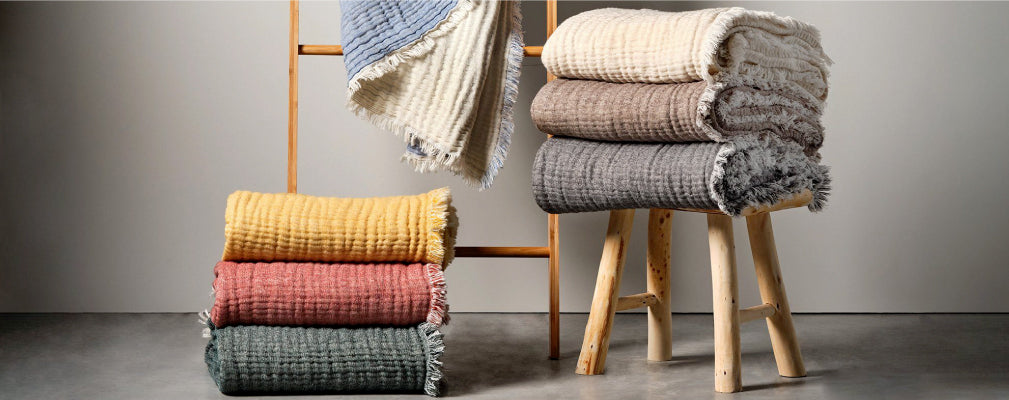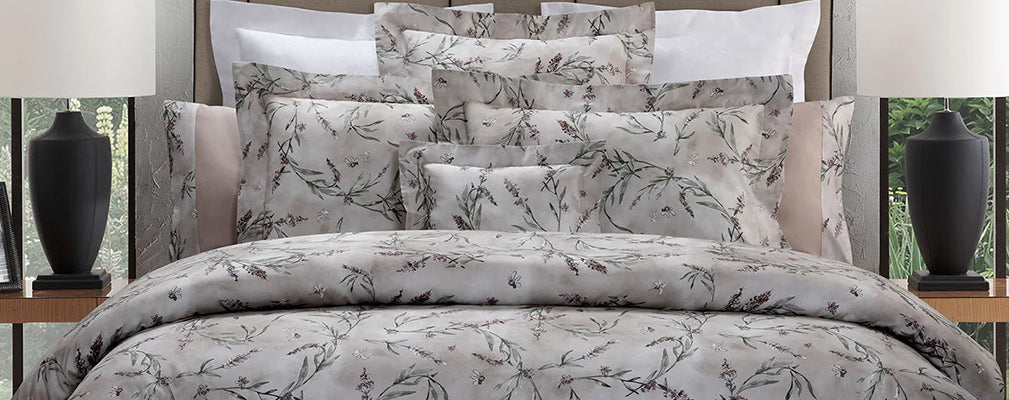Blankets, companions of chilly evenings on the couch and trusted companions that also warm the heart, so common and yet with an ancient history behind them. Their earliest trace dates back to ancient Egypt, around 3,500 B.C., although the earliest use of animal skins to cover oneself could be considered similar.
The Greeks used woolen blankets to cover themselves during sleep, while for the Romans they were a form of currency. During the Middle Ages, blankets were a privilege of the wealthy because they were made of warm wool, while the population made do with light sheets made of hemp or coarse linen. It is with the industrial revolution that everything changed and blanket production became more efficient and economical until the present day. Today, blankets are in every home, on every sofa and their use can vary from warming up, to decorating home with touches of color and cheer.
The most common materials
The first blankets, as we have seen, were made from animal skins, and over the centuries these were replaced by plant fibers such as linen and cotton and later by wool, which became common with the development of animal husbandry. Today, synthetic fibers such as polyester and nylon stand alongside natural ones, offering great strength at a lower cost.
Microfleece
Microfleece blankets are known for their extraordinary softness while remaining light and warm. They are ideal for everyday and all-weather use because they maintain excellent thermal insulation while retaining body heat. They are, in addition, durable and hypoallergenic because the synthetic fibers do not retain dust mites.
 |
 |
 |
Cotton
Cotton is known for its breathability, making it one of the lightest fabrics perfect for all seasons, staying warm in winter and cool in summer. One of the capabilities for which cotton is among the most widely used materials for making garments is its absorption of body moisture, which helps to leave the body dry.
 |
 |
 |
Wool
As noted above, wool has always been a favorite material for making blankets because it is warm and soft. Boiled wool is a special type of wool obtained through a process of heat treating and felting raw wool to create a more compact fabric. Because of the felting process, boiled wool blankets are more durable than traditional wool blankets and are less prone to forming creases and collecting dust.
 |
 |
 |
| Blanket in Boiled Wool with printed Deer - Stelvio | Blanket in Mohair Wool Blend - Raffaello |





